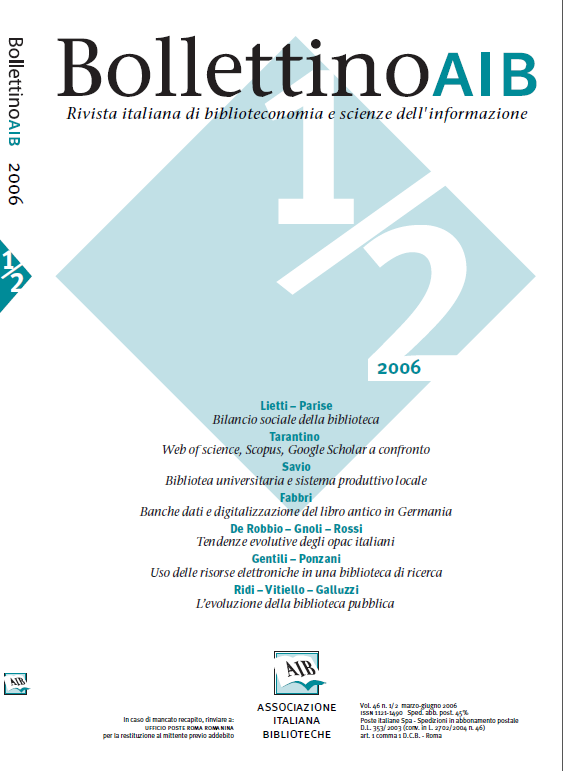The social status of libraries
Main Article Content
Abstract
The role of public libraries as a service structure for the territory has changed significantly in the last ten years thanks to the capacity that these institutes have demonstrated in knowing how to respond to the information needs of an increasingly more varied public.
This has determined a renewed perception of the social dimension of a library's activity that needs to be systemized, described and measured as regards its effects.
Social status is the tool of this analysis process. It is thanks to it that a relationship can be established between a library's activity and the effects produced on various categories of subjects which are involved in one way or another.
The article aims at making a contribution to the Italian debate on the theme of the social value of library activity, and in particular on the theme of the economic value and social impact of libraries, through a description of some of the main research methods taken from international literature on the subject.
The concept of value is dealt with within two different evaluation paradigms:
- the economic explanation, that assigns an economic value to the benefits deriving to society from the use of library services, three different approaches of which are proposed in the article:
- The contingent evaluation method;
- The method of journey cost;
- The optimisation model by Anne Morris, John Sumsion and Margaret Hawkins.
- The social explanation, that measures the importance of the results on the territory by evaluating the effects produced on society within the more extensive framework of public policies aimed at promoting the welfare of the citizens: the experimental evaluation method called Theory Based Evaluation (TBE) is proposed.
Article Details

This work is licensed under a Creative Commons Attribution-ShareAlike 4.0 International License.
